Traditional English Buttermilk Scones With Currants
These soft and fluffy English buttermilk scones are a big part of a traditional afternoon tea. But they also work well as part of a brunch menu, or as something different to serve instead of biscuits.
This simple recipe for traditional English buttermilk scones comes from my sister-in-law Mary.
It is really easy to cook and makes the best scones I have ever had.
They are light and fluffy and turn out every time.
Ingredients
This post may contain affiliate links. We make a small commission if you buy the products from these links (at no extra cost to you). As an Amazon Associate, I earn from qualifying purchases. But we only recommend products we would use ourselves. For more information, click here to see our disclosures
Here is your shopping list:
- Baking supplies – 2 cups flour, 1 Tablespoon baking powder, ½ teaspoon baking soda, pinch salt
- Sugar – ¼ cup white granulated sugar, plus some extra for dipping if desired
- Dairy – ¾ cup buttermilk, ½ cup margarine
- Spices – pinch nutmeg
- Dried fruit – ½ cup currants or raisins
- Serve with: Clotted cream* (also known as Devonshire cream) and jam.
Substitutions
- For a gluten-free version, substitute measure-for-measure gluten-free flour for the regular flour. I like King Arthur’s brand.
- While I recommend using buttermilk for the best results, you can replace it with ¾ cup milk and a teaspoon of lemon juice in a pinch.
- Substitute dried cranberries or other dried fruits for the currants if desired.
- Or for plain scones, eliminate the dried fruit altogether.
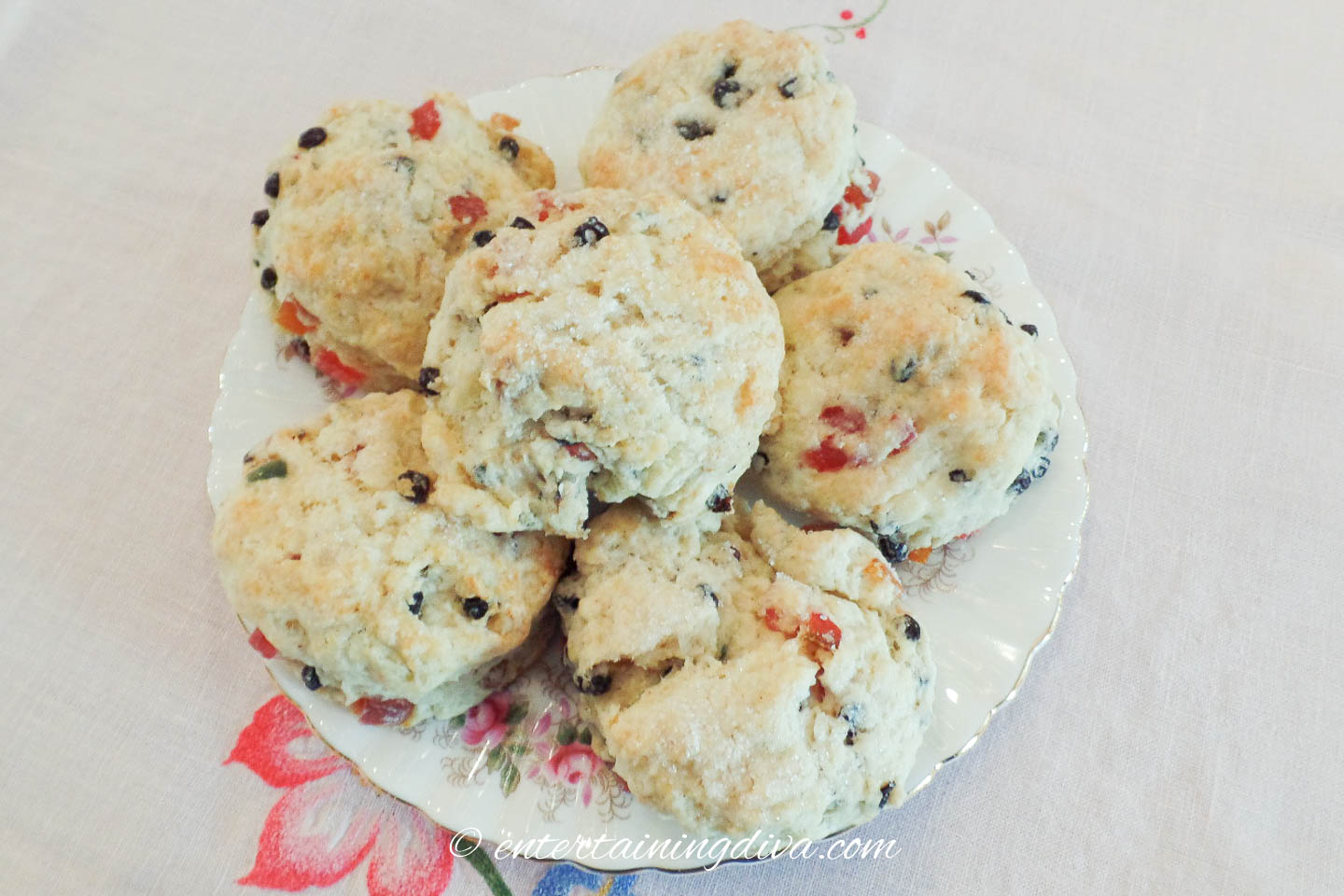
How to make scones with buttermilk
Prep work
Pre-heat the oven to 375℉.
Line a cookie sheet with some parchment paper.
This will prevent the bottom of the scones from burning and makes them easier to remove.
Mix the batter
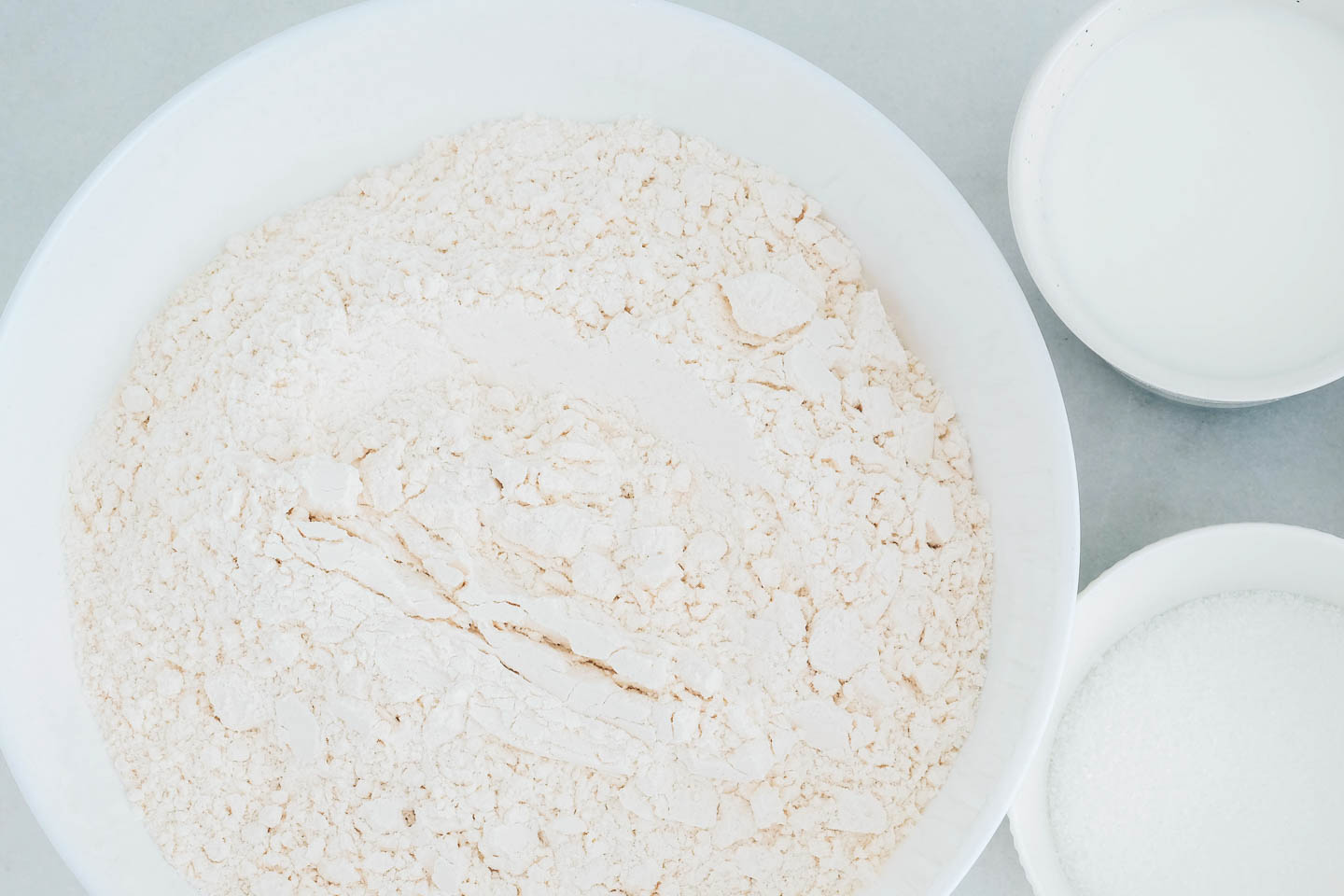
Mix the flour, sugar, baking powder and baking soda in a mixing bowl.
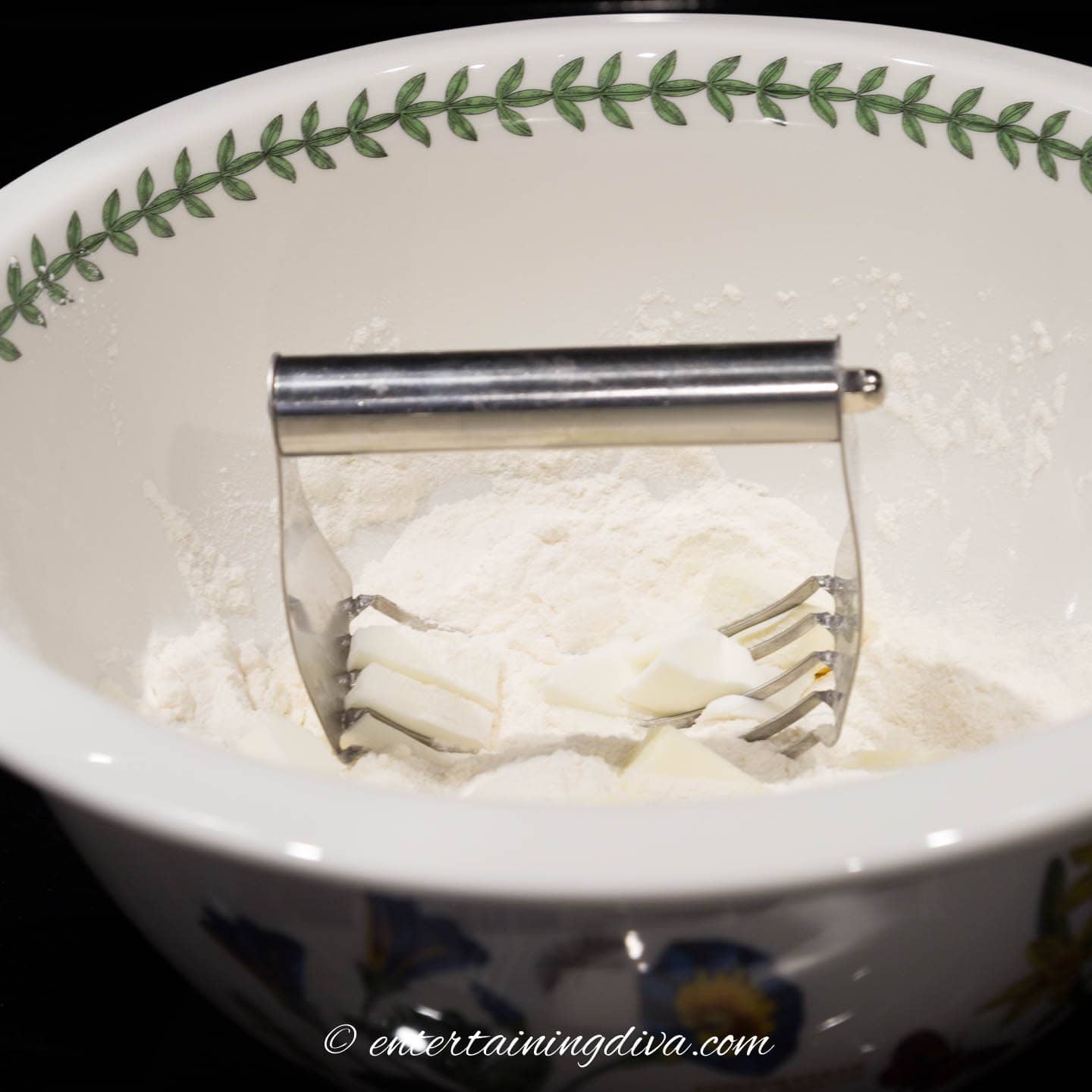
Use a pastry blender to cut the margarine into the flour mixture. If you don’t have a pastry blender, you can use two knives cutting in a cross wise motion to achieve the same results.
Keep cutting until the margarine has been reduced to pea sized pieces.
Mix in the salt, nutmeg and dried fruit.
Add the buttermilk.
Gently mix by hand until the mixture sticks together enough to be rolled out.
Do not use a beater for this. You will either end up with a bunch of crumbles or really tough scones.
Roll out the dough
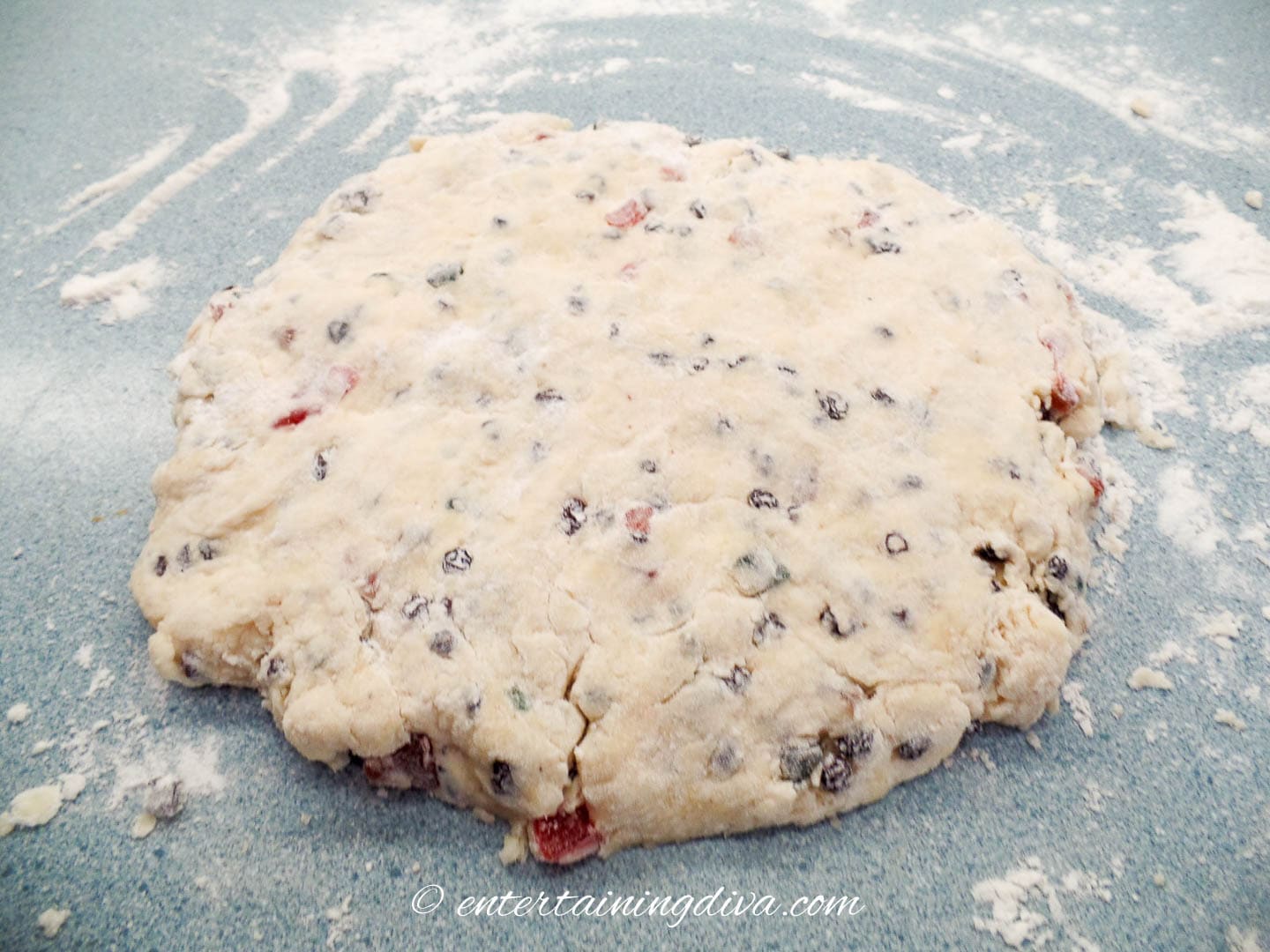
Use the rolling pin to roll out the dough to about ¾ inch thick.
If you don’t have a rolling pin, you can use your hands to pat out the dough to this thickness.
Use a round cookie cutter or small glass with the edges dipped in flour to cut out circles from the dough.
If you have dough left over, you can ball it up and repeat the rolling out process to cut out some more scones.
Bake
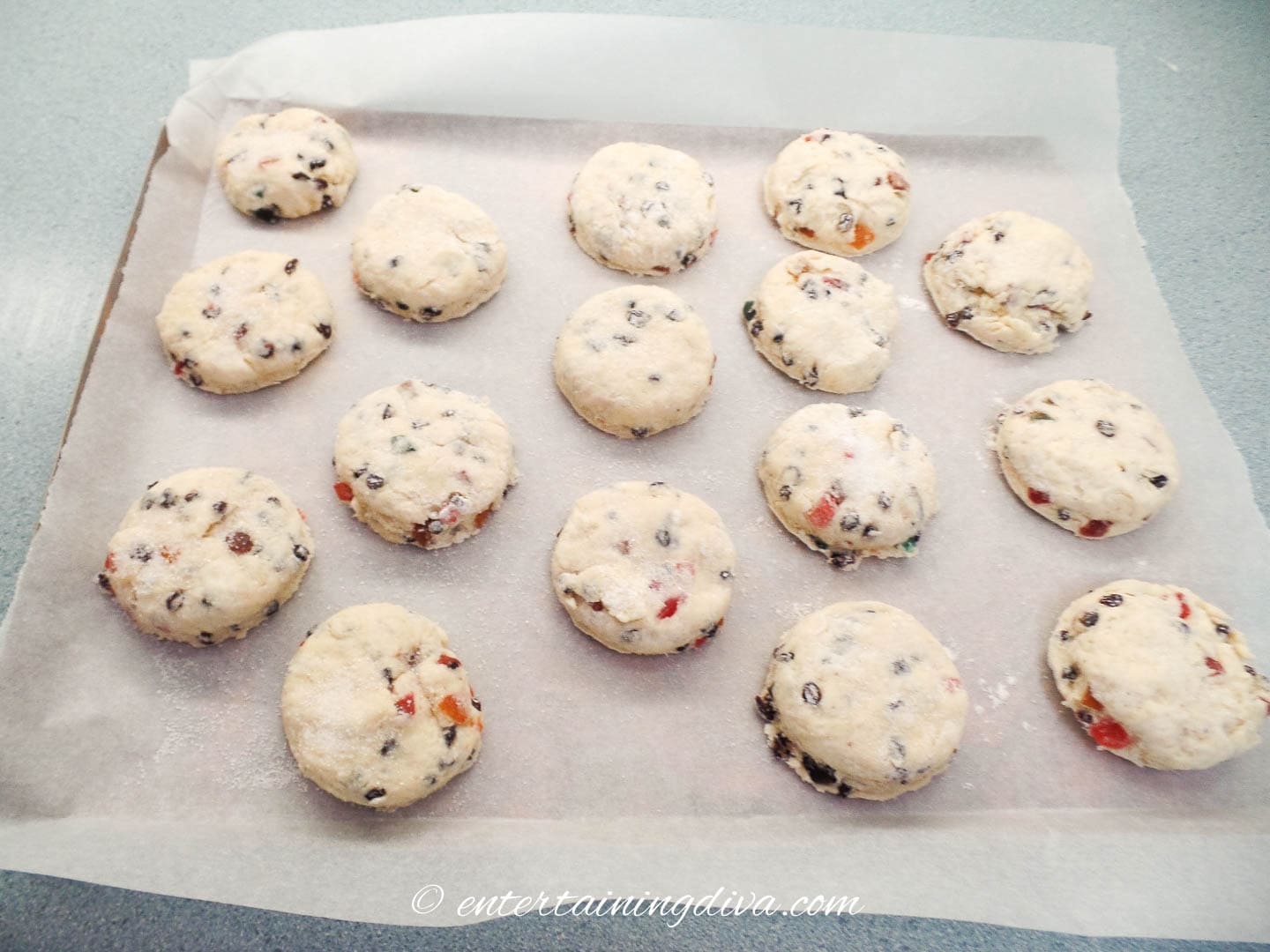
Place the scones on the lined cookie sheet.
Sprinkle with a little sugar if desired.
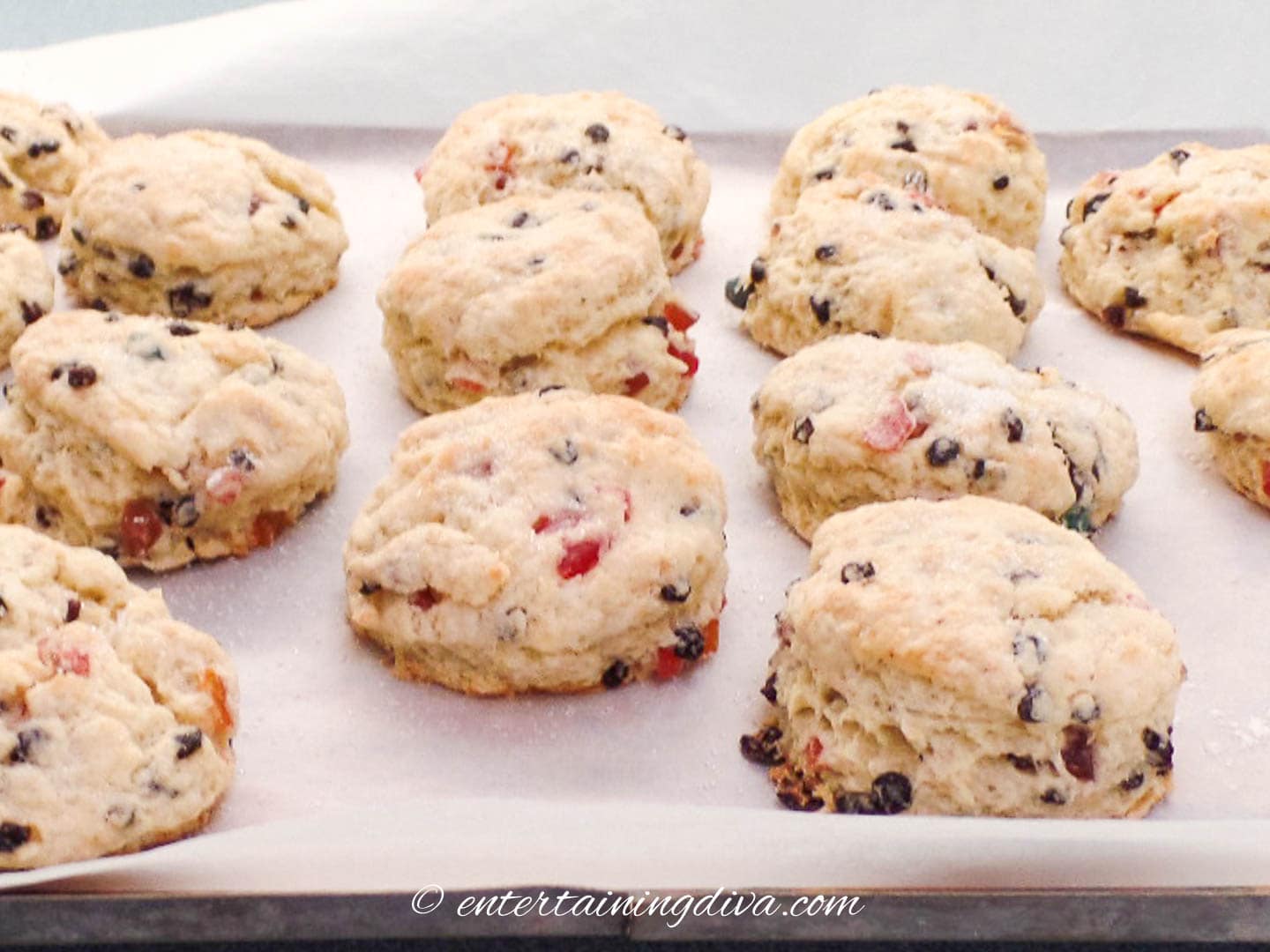
Bake at 375℉ for 12 to 15 minutes until they have puffed up and are a little brown on the top.
How to serve scones
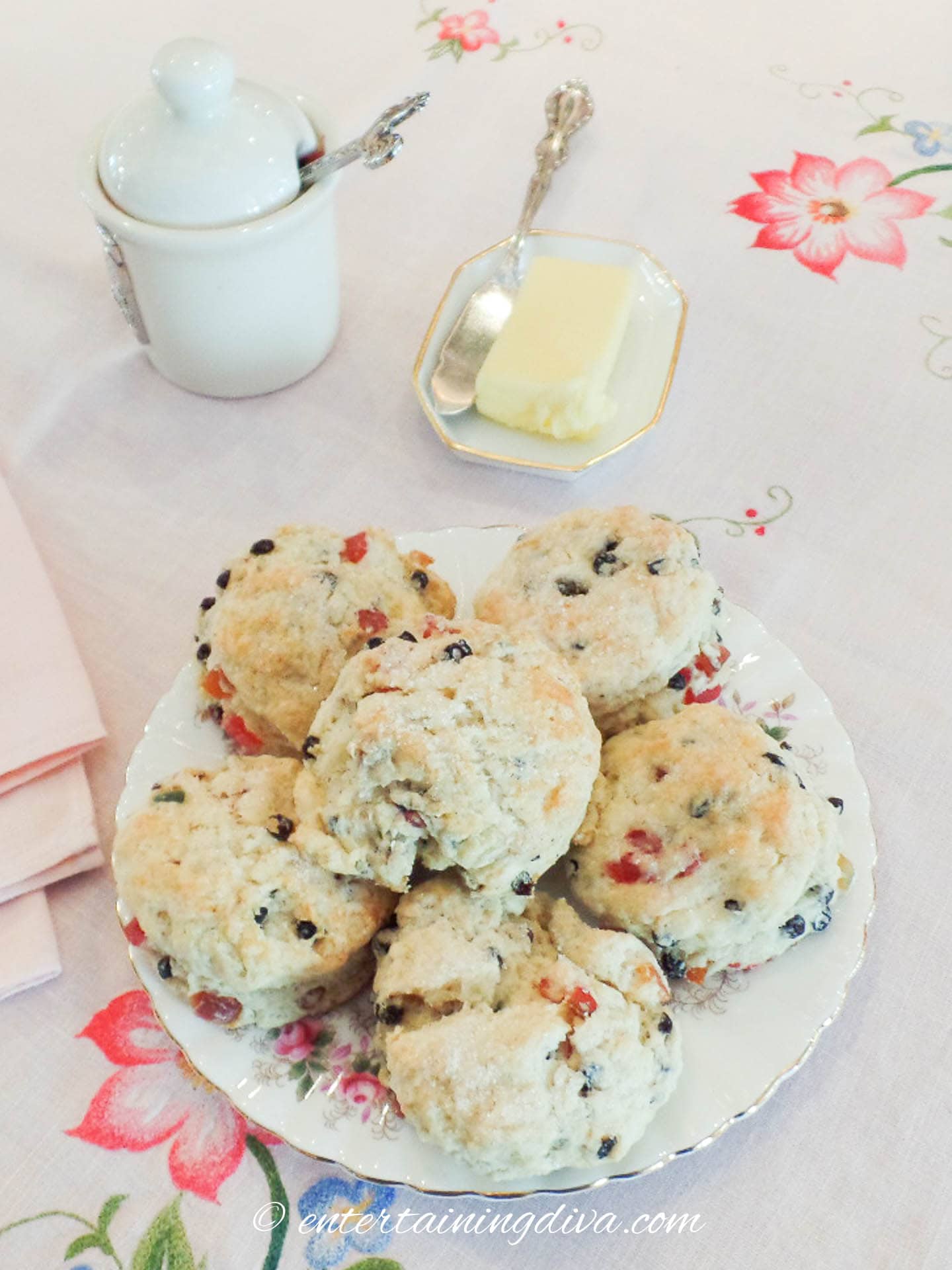
Serve scones warm or cool with clotted cream or butter and jam.
Clotted cream is the traditional British topping for scones.
It is a spread that has a consistency half way between cream cheese and whipping cream.
Although the name may sound a little off-putting, it really is delicious!
If you are serving your scones warm on a buffet, you may want to cover them with a tea towel to help keep them warm but not soggy.
Frequently asked questions
Why use buttermilk in scones?
The acidity in buttermilk helps the baking soda and baking powder produce more carbon dioxide. This causes the dough to rise, creating light and fluffy scones.
What can I use instead of buttermilk?
If you don’t have buttermilk, you can substitute an equal amount of milk with a teaspoon of lemon juice.
Other brunch (or tea) recipes you might like
- Maple pecan scones with cinnamon butter
- Glazed lemon blueberry scones
- Strawberry rhubarb bran muffins
- Classic banana nut bread
- Easy cheddar cheese biscuits
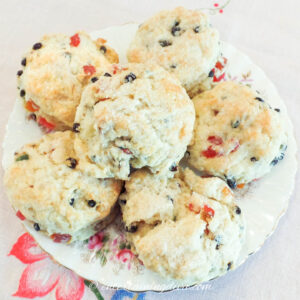
Traditional English Buttermilk Scones
Ingredients
- 2 cups flour
- ¼ cup sugar
- 1 Tablespoons baking powder
- ½ teaspoon baking soda
- ½ cup margarine
- pinch salt
- pinch nutmeg
- ½ cup dried fruit raisins, or currants
- ¾ cup buttermilk
- sugar for dipping optional
Equipment
- Baking sheet
- parchment paper
- mixing bowl
- measuring cups and spoons
Instructions
- Pre-heat the oven to 375°F.
- Cover the cookie sheet with a layer of parchment paper.
- Mix the flour, sugar, baking powder and baking soda in a bowl.
- Cut in the margarine. Do this either by using a pastry blender or with two knives in a cross-wise cutting motion.
- Add the salt, nutmeg and dried fruit.
- Stir well to coat the fruit with the flour mixture.
- Over all of this, add the buttermilk.
- Gently mix until you can pat out or roll out the mixture (do not beat).
- Roll out to about a 3/4″ thickness.
- For round scones, use a round cookie cutter, or a small glass dipped in flour to cut them.
- For a bit of sparkle, dip the tops of the scones in sugar. (Optional)
- Bake on the parchment paper covered cookie sheet for 12-15 minutes depending on size. They should be light brown on top and bottom when done.
- Serve the scones (warm or cool) with clotted cream (or Devonshire cream) and jam.
Notes
- Covering the cookie sheet in parchment paper will prevent the bottom of the scones from burning, and make them easier to remove.
- For a gluten-free version, substitute 2 cups of measure-for-measure gluten-free flour.
- If you don’t have buttermilk, you can replace it with 3/4 cup milk and a teaspoon of lemon juice.
Nutrition values are estimates only, using online calculators. Please verify using your own data.
Have comments or questions on our traditional English buttermilk scones recipe? Tell us in the section below.
This post was originally published on December 24, 2015 but was updated with new content on March 30, 2024.

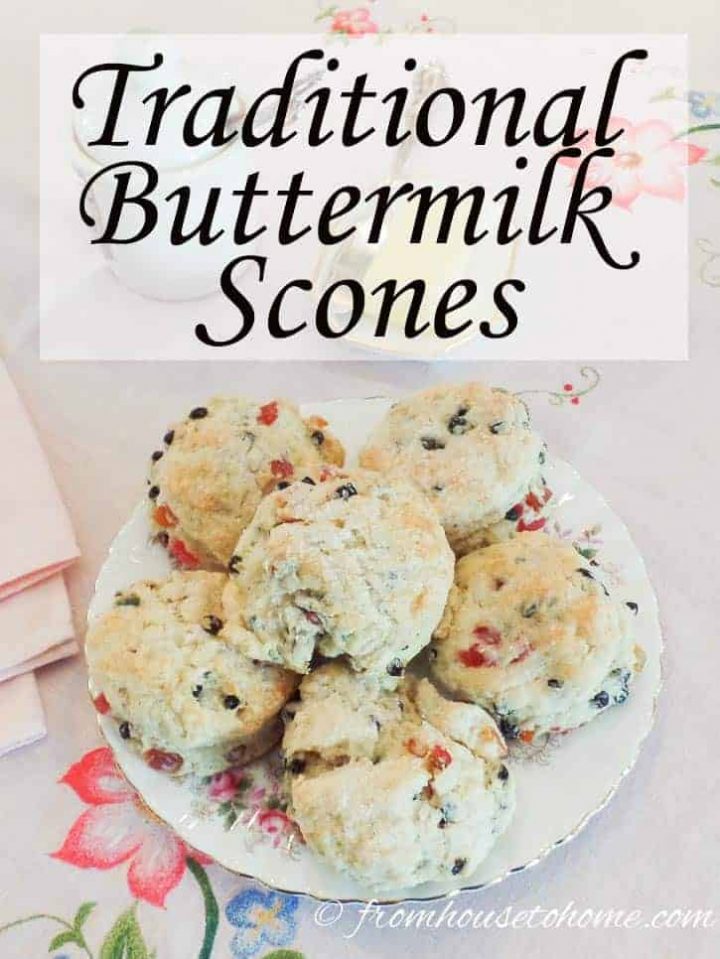


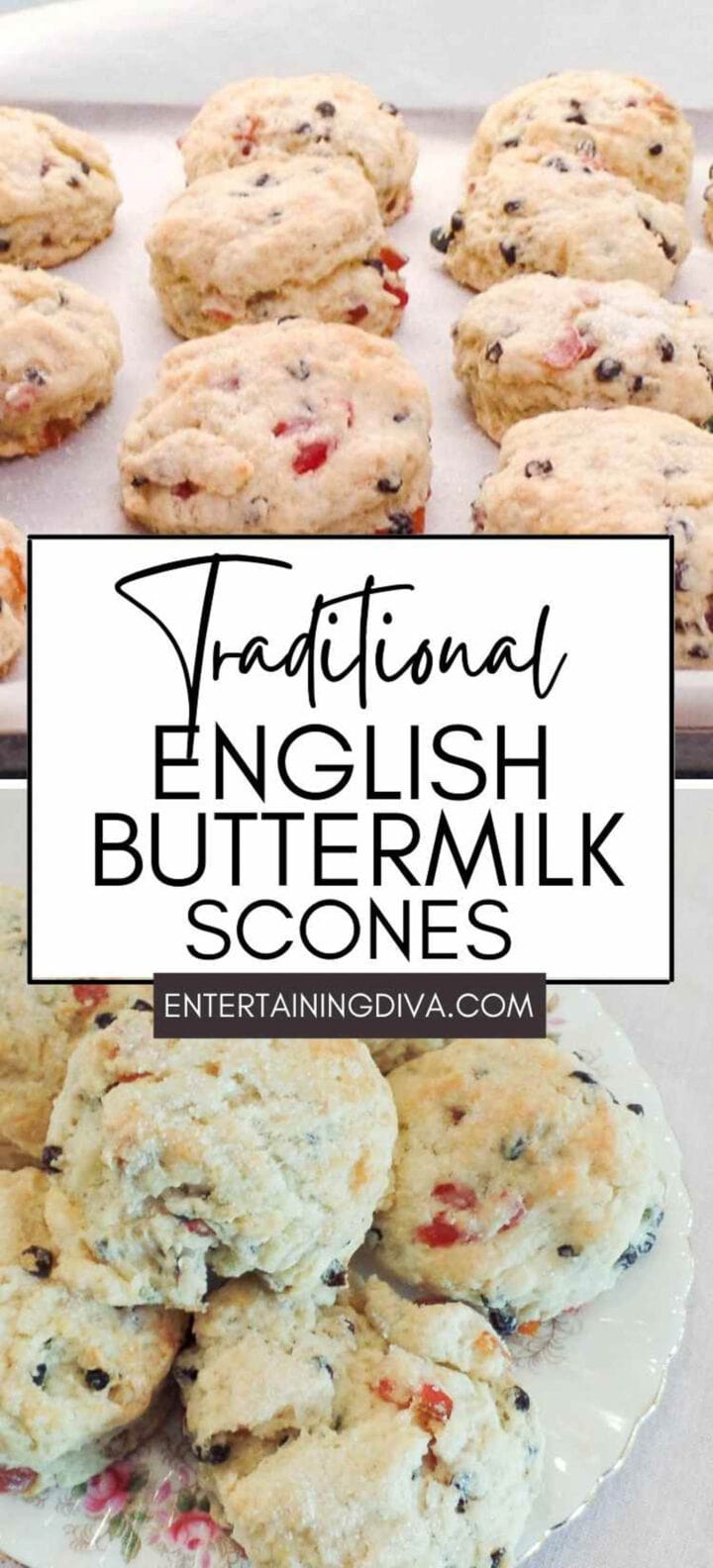
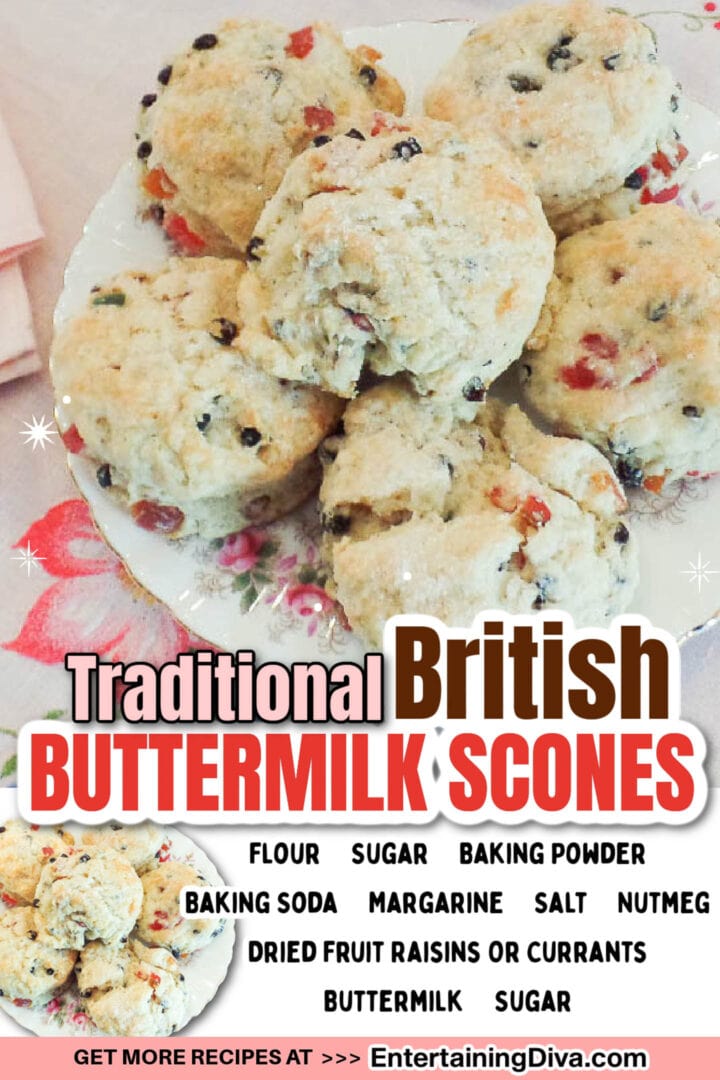
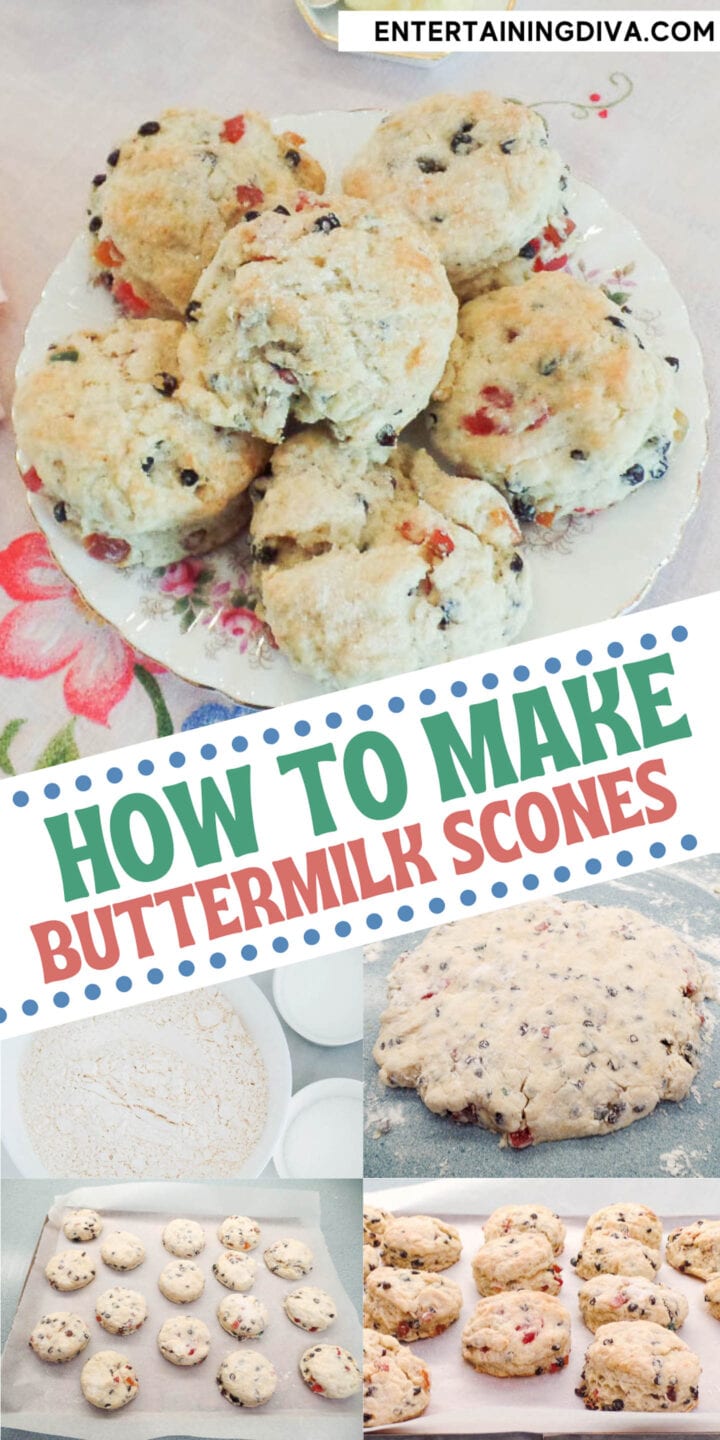

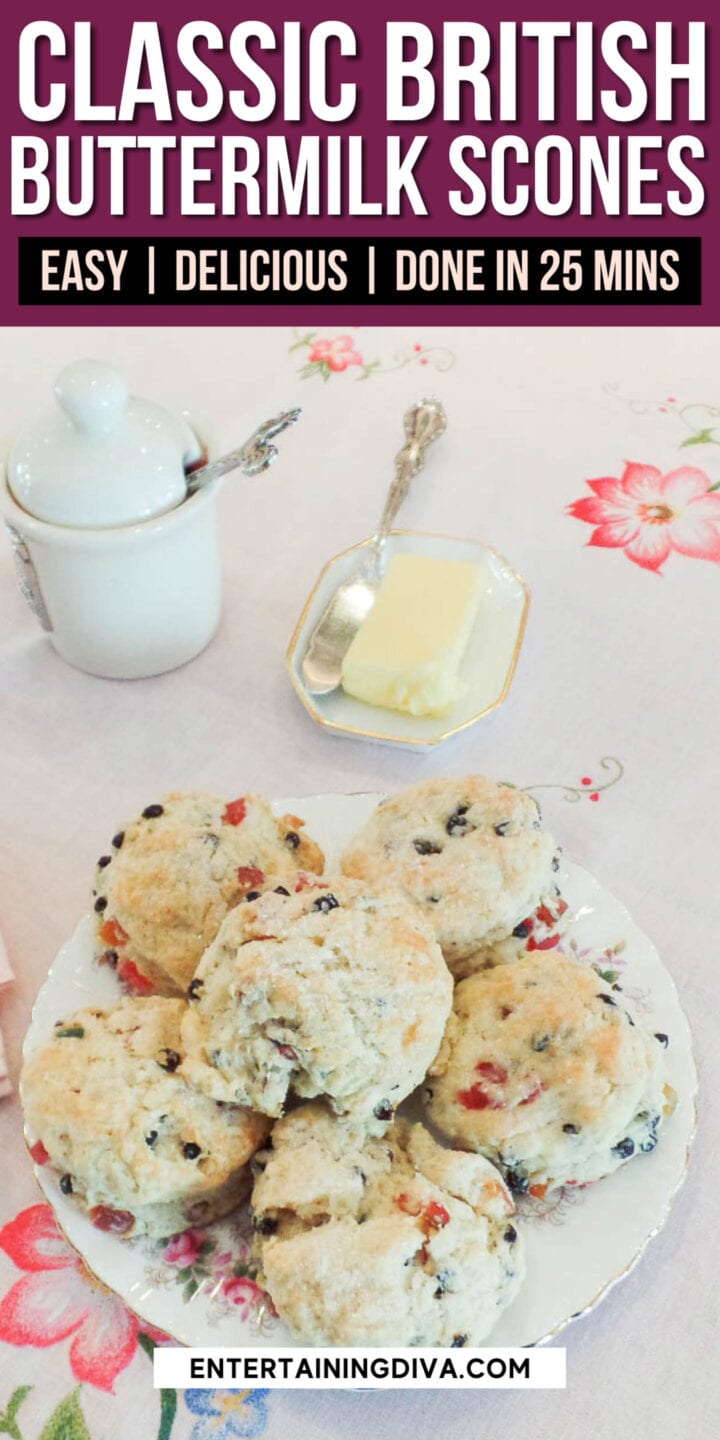
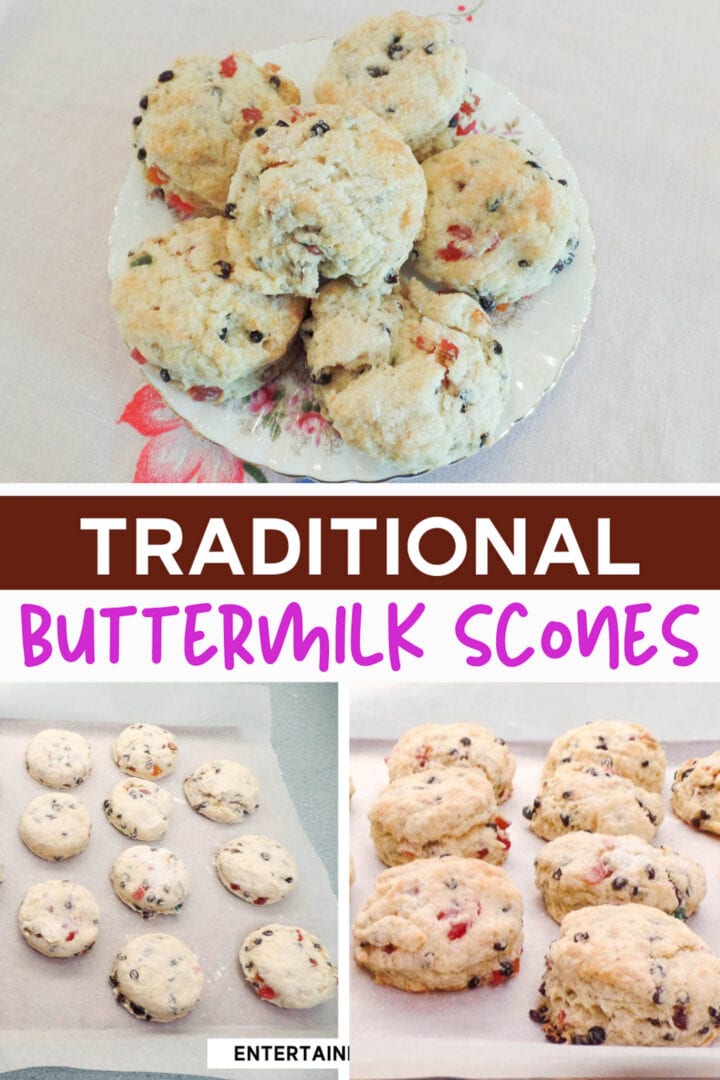

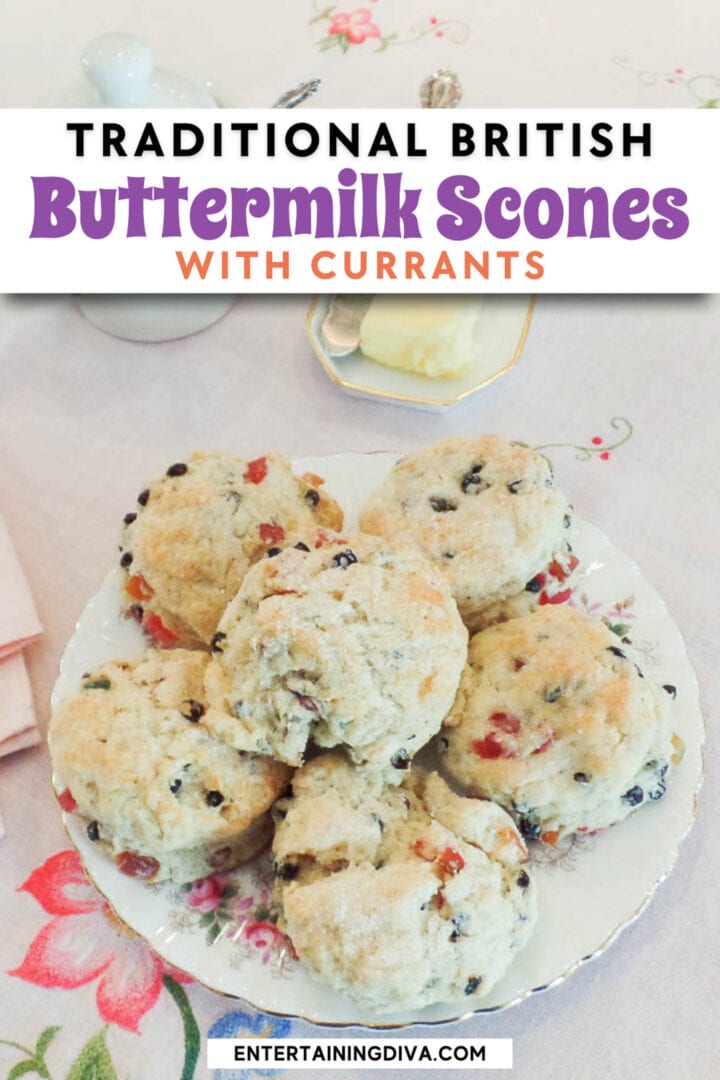

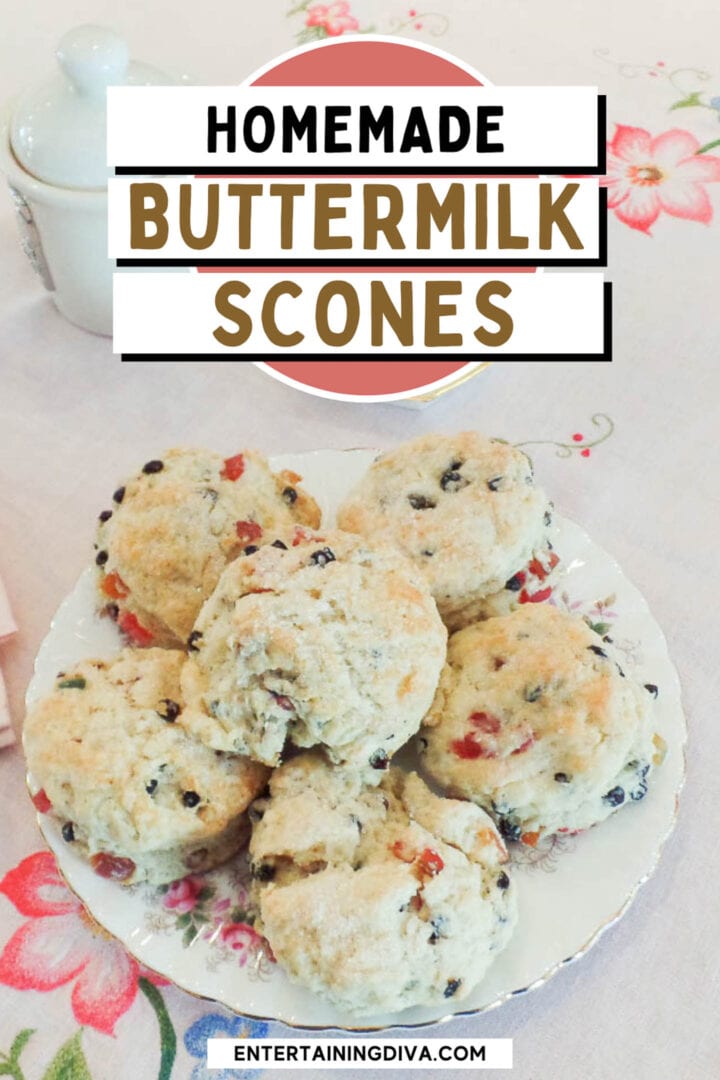

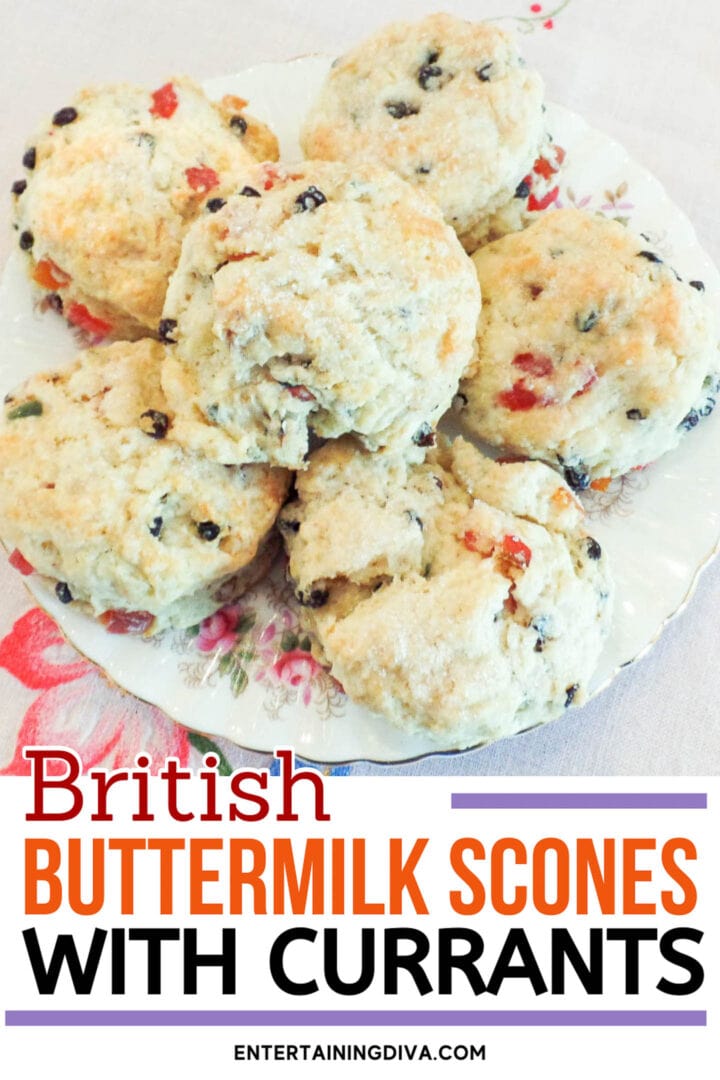

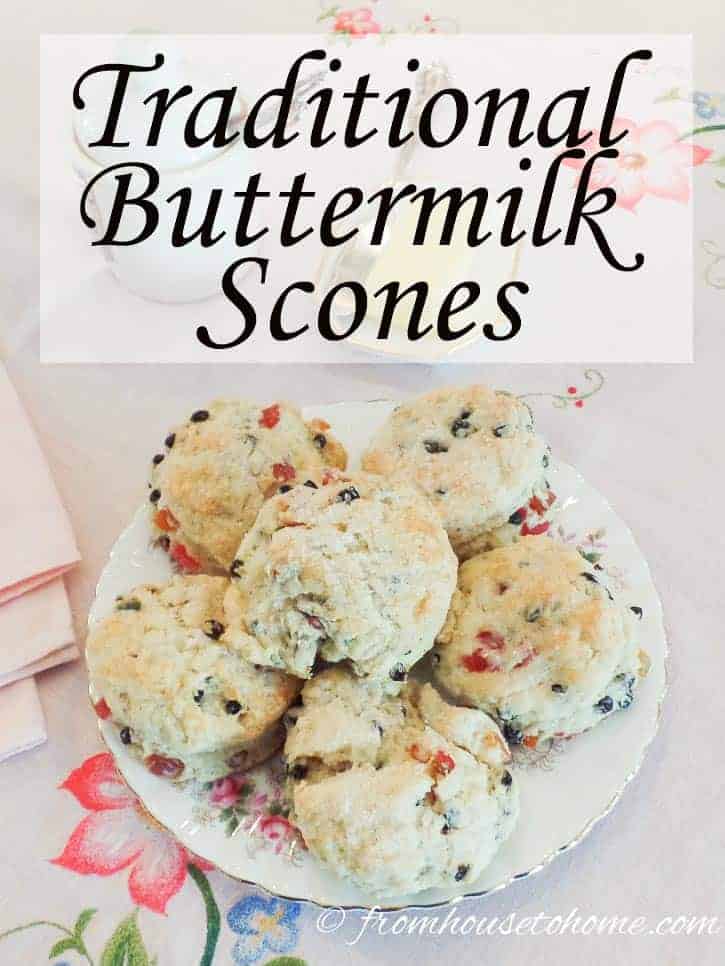
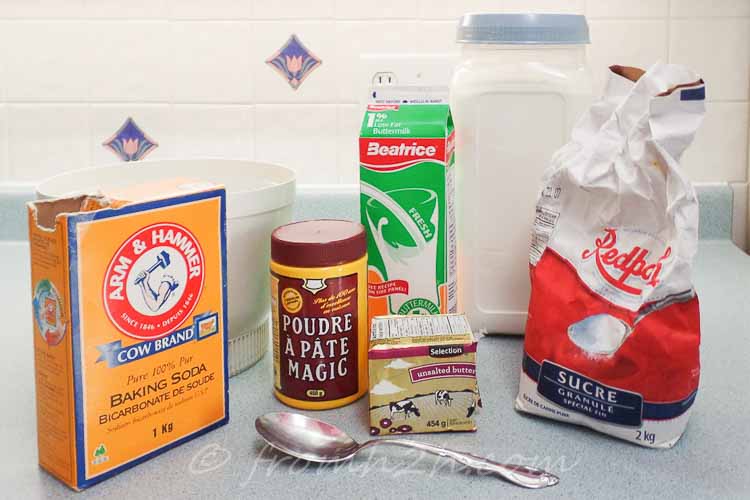
Wow, these look yummy!
Thanks, Ivory! They are yummy 🙂
I made these scones for.my niece’s wedding shower tea. I used dried cranberries, orange zest and white chocolate chips, and drizzled an orange glaze over the top when they were cool. Fabulous response from the guests…they didn’t need a thing, and disappeared!
Hi Sandra…those scones sound delicious! I haven’t tried using white chocolate chips in them, but that’s a great idea. And I bet the orange glaze looked really pretty (as well as tasting great). Thanks for sharing!
They not only sound delicious, but they look pretty, too. Thanks for the recipe! – Donna
Thanks, Donna! They are really good 🙂
I made these scones and thought I followed the recipe carefully. They tasted ok did not rise up very much. Any ideas on what could have gone wrong?
Sorry Linda that your scones did not turn out well. Making scones requires a very light touch after the buttermilk is added. The batter needs to be mixed quickly and not too thoroughly. It should then be patted out or rolled quickly and gently, shaped, and put into the oven right away. You may have over worked the dough so that the leavening agents were spent. Hope you have better luck next time!